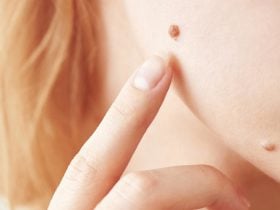Cancer treatment methods are known to lead to certain side effects. Common side effects of these treatments may include a loss of energy, nausea, and hair loss. Rare side effects such as how the treatment affects your skin and nails may also occur in some people. It is important to note that changes in your skin, finger nail and toenails during cancer treatment is a normal experience.
This article will discuss how cancer treatments can affect the look and texture of our skin and nails, why it occurs, and how to prevent it from happening.
Skin Changes during Cancer Treatment

Cancer treatment can lead to changes in your nails and skin. It is important to speak with your healthcare provider to know what side effects you’ll experience if you are treating cancer. In most cases, the severity of the side effects usually depends on the type of treatment. For example, skin disorders caused by chemotherapy and radiation therapy are usually mild, while those caused by targeted therapy, immunotherapy, and cell transplant, are mostly severe.
It would help to tell your healthcare provider if you notice any changes in your skin while undergoing any cancer treatment.
According to studies, the dryness, peeling, and itching of the skin that occurs during cancer treatment is caused by radiation therapy. Your skin may turn darker or red. In some cases, you may also start to develop sores that get wet, painful, and infected. This is clinically referred to as a moist reaction.
Chemotherapy may cause your skin to get red or darker, peel, dry, or itchy. It may also lead to photosensitivity, a condition where you get sunburn or minor rash easily. You may experience skin pigmentation fluctuations during chemotherapy. If you have undergone radiation therapy in the past, the area of the skin that was exposed to the radiation may peel, hurt, get red or blister during chemotherapy. This is clinically known as radiation recall.
Chemotherapy can also lead to allergic responses. The responses usually manifest as a burning sensation, hives, or severe rash. Stem cell transplant, [1] a type of cancer treatment, can lead to graft-versus-host disease (GVHD). Signs of this disease include thickening of the skin, blisters, or rash. In some cases, immunotherapy [2] may cause serious and extensive rash or blisters.
Targeted therapy can also cause dry skin, nail problems, and rash. Speak with your healthcare provider if you have a rash during targeted therapy.
Nail Changes that Occur during Chemotherapy
Research shows that chemotherapy can affect the development of new cells in your body by destroying the keratin-containing cells in the nails. [3]
The cycle of nail regrowth does not occur overnight. According to studies, the toenails and fingernails start to grow back 6 to 12 months after chemotherapy.
Let’s take a look at some of the symptoms of nail changes that occur during cancer treatment.













